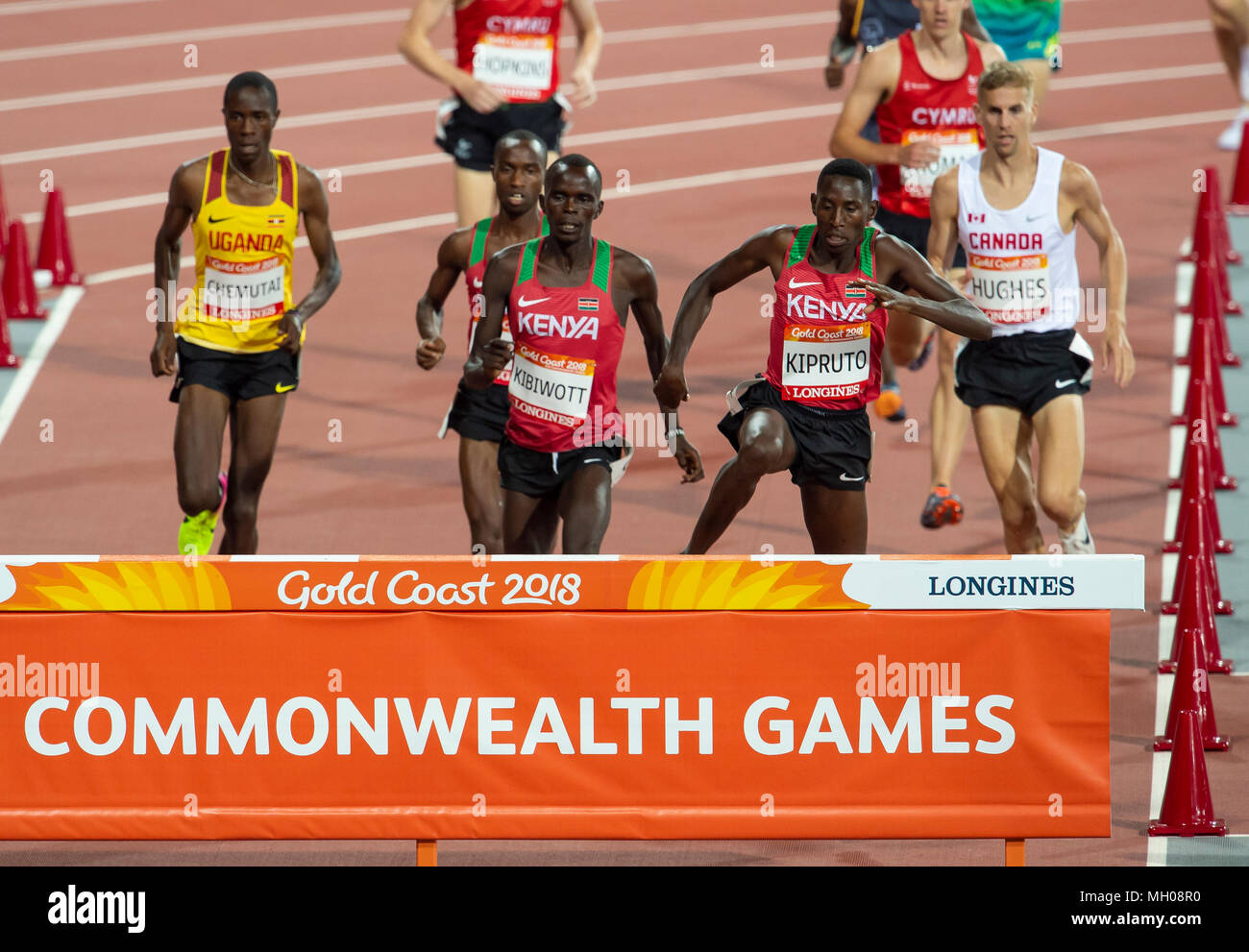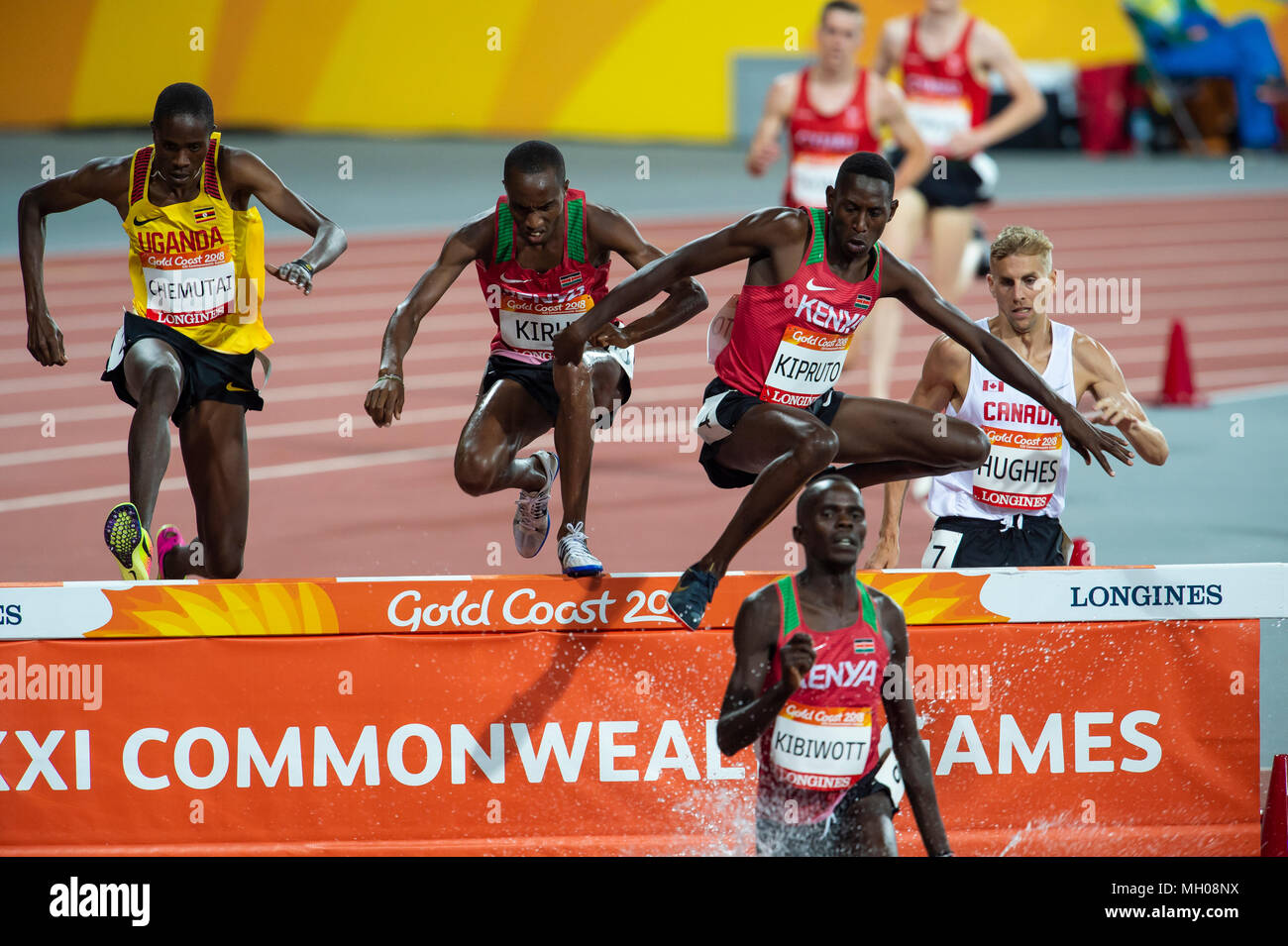The Race: Men’s Steeplechase Final

The men’s steeplechase final is a thrilling event that tests the limits of endurance, agility, and strategic thinking. This race has evolved over time, reflecting changes in rules, techniques, and the emergence of exceptional athletes.
The History and Evolution of the Steeplechase
The steeplechase, as a track and field event, originated in the late 19th century, with roots in cross-country running and horse racing. Early versions of the steeplechase featured obstacles that mimicked natural terrain, including fences, ditches, and water jumps. Over time, the event evolved into a standardized track race with a specific set of obstacles.
- The first official steeplechase event at the Olympic Games was held in 1900, with the distance set at 2,500 meters.
- The distance was changed to 3,000 meters in 1920, and the modern steeplechase with its iconic water jump was introduced in 1924.
- The water jump, initially 3 feet deep and 12 feet wide, has undergone adjustments throughout the years, with the current standard depth at 2 feet 6 inches and a width of 3 meters.
- The introduction of the water jump significantly changed the dynamics of the race, requiring athletes to develop specialized techniques for clearing the obstacle effectively.
Challenges and Unique Aspects of the Steeplechase
The steeplechase presents unique challenges that distinguish it from other track and field events.
- The combination of running and obstacle negotiation requires a high level of athleticism and coordination.
- The water jump is a particularly demanding obstacle, as athletes must maintain momentum while clearing the water and landing safely on the other side.
- The race’s undulating course, often featuring a series of hills, adds an extra layer of difficulty.
- The steeplechase is a highly tactical race, with athletes often using strategic positioning and pacing to gain an advantage.
Prominent Athletes and Recent Records
The men’s steeplechase has seen the rise of many legendary athletes who have pushed the boundaries of the sport.
- Saif Saaeed Shaheen (formerly Stephen Cherono) holds the world record in the men’s steeplechase, clocking in at 7:53.63 in 2004.
- Ezekiel Kemboi is a four-time Olympic champion and a five-time world champion, widely regarded as one of the greatest steeplechasers of all time.
- Conseslus Kipruto is the reigning Olympic champion and a former world champion, known for his exceptional water jump technique.
Upcoming Events and Future Prospects
The men’s steeplechase remains a popular and exciting event, with upcoming competitions attracting top athletes from around the world. The World Athletics Championships, held every two years, is a major event for the steeplechase, as is the Olympic Games. With the continuous evolution of training methods and the emergence of new talent, the future of the men’s steeplechase promises to be filled with thrilling races and record-breaking performances.
Key Moments and Strategies

The men’s steeplechase final is a thrilling and challenging event, characterized by its unique obstacles and demanding pace. Athletes must navigate the water jump, a crucial element that significantly impacts race strategy and tactics.
Water Jump Significance and Impact on Race Strategy
The water jump is more than just an obstacle; it’s a strategic element that influences the entire race. Its presence forces athletes to consider the following:
* Pace and Timing: The water jump can disrupt momentum and rhythm. Athletes must adjust their pace to maintain a smooth transition over the barrier and into the water.
* Energy Conservation: While the water jump itself isn’t physically demanding, the impact on the body and the need to regain momentum can lead to energy expenditure. Athletes must strategize to conserve energy for the remaining laps.
* Positioning: The water jump can create opportunities for overtaking or losing ground. Athletes need to be strategically positioned before the jump to avoid getting boxed in or losing momentum.
Running Styles and Tactics
Top steeplechase athletes employ a variety of running styles and tactics to overcome the challenges of the event.
* The “High-Knee” Approach: This style involves a high knee lift to clear the barrier, minimizing the impact on the body. This approach is favored by athletes who prioritize speed and efficiency.
* The “Power-Leg” Approach: Athletes using this style rely on strong leg power to propel themselves over the barrier. This approach is often used by athletes with a powerful stride and a strong core.
* The “Lean-and-Slide” Approach: This style involves a lean into the barrier, followed by a smooth slide over the top. This approach minimizes the risk of stumbling and maintains momentum.
Crucial Moments in Recent Men’s Steeplechase Finals
* 2012 London Olympics: The final lap of the men’s steeplechase saw a dramatic surge from Ezekiel Kemboi of Kenya, who overtook Mahiedine Mekhissi-Benabbad of France to secure gold. This moment highlighted the importance of maintaining focus and pushing through to the finish line.
* 2016 Rio Olympics: Conseslus Kipruto of Kenya set a new Olympic record, demonstrating the increasing level of athleticism and performance in the event. His dominant victory showcased the importance of strategic pacing and tactical execution.
* 2020 Tokyo Olympics: The final lap of the men’s steeplechase saw a fierce battle for the lead, with Soufiane El Bakkali of Morocco ultimately securing gold. This moment emphasized the importance of tactical positioning and the ability to adapt to changing race dynamics.
Impact and Significance

The men’s steeplechase final stands as a testament to the pinnacle of athletic prowess, endurance, and sportsmanship in track and field. This demanding event showcases the exceptional physical and mental fortitude required to conquer the unique challenges of the steeplechase.
Men’s steeplechase final – The event’s impact extends beyond the immediate competition, influencing the development of other running disciplines and contributing to the overall growth of the sport. The steeplechase’s unique combination of speed, endurance, and technical skill serves as a catalyst for innovation and progress in other running events. The strategies and techniques employed by steeplechasers, such as hurdle clearance and water jump negotiation, have inspired adaptations and improvements in other running disciplines, enhancing performance and pushing the boundaries of human potential.
Influence on Other Running Disciplines
The men’s steeplechase final’s influence on other running disciplines is multifaceted, extending to both short-distance and long-distance events.
- Hurdle Technique: The steeplechase’s high hurdles demand precise technique and agility, which can be applied to other hurdle events, such as the 100m hurdles and 400m hurdles. The development of hurdle clearance techniques in the steeplechase has directly influenced the evolution of hurdle technique in other events, leading to more efficient and effective hurdle strategies.
- Endurance and Pace Management: The demanding nature of the steeplechase, requiring both speed and endurance, has significant implications for other running disciplines. The ability to maintain a high pace over a longer distance, while navigating obstacles, has inspired the development of pacing strategies in events such as the 5000m and 10,000m, promoting greater efficiency and endurance.
- Mental Toughness: The mental fortitude required to overcome the physical and mental challenges of the steeplechase is highly transferable to other running disciplines. The ability to focus, maintain composure, and push through fatigue in the face of adversity is a key attribute of successful runners across all distances.
Contribution to the Track and Field Community, Men’s steeplechase final
The men’s steeplechase final plays a crucial role in the broader track and field community, fostering a spirit of competition, camaraderie, and respect.
- Inspiring Young Athletes: The event serves as an inspiration for young athletes, showcasing the extraordinary athleticism and dedication required to excel at the highest level. The steeplechase’s unique challenges and the stories of triumph over adversity provide a powerful message of perseverance and determination, encouraging aspiring athletes to pursue their dreams.
- Promoting Sportsmanship: The steeplechase, like all track and field events, emphasizes sportsmanship and fair play. The respect between competitors, the acknowledgment of outstanding performances, and the celebration of shared achievements contribute to a positive and supportive environment within the track and field community.
- Enhancing the Spectator Experience: The men’s steeplechase final is a captivating event for spectators, offering a unique blend of speed, endurance, and technical skill. The water jump, the high hurdles, and the dramatic finish create a dynamic and exciting experience that attracts fans and contributes to the popularity of track and field.
Future of the Men’s Steeplechase Final
The future of the men’s steeplechase final is promising, with continued advancements in training, technology, and the pursuit of athletic excellence.
- Technological Advancements: The use of data analytics, wearable technology, and biomechanical analysis will continue to refine training techniques and optimize performance. The application of these tools will help athletes improve their efficiency, reduce injury risk, and push the boundaries of human potential.
- Evolving Strategies: The strategic approaches to the steeplechase are constantly evolving, with athletes seeking new ways to optimize their performance. The development of more efficient hurdle clearance techniques, water jump strategies, and pacing plans will continue to shape the event’s landscape.
- Global Growth: The popularity of the steeplechase is increasing globally, with more athletes from diverse backgrounds entering the competition. This growing participation will lead to greater competition, innovation, and the emergence of new talent, further elevating the standard of the event.
The men’s steeplechase final is a thrilling event, showcasing incredible athleticism and determination. While the focus might be on the runners navigating the water jumps and hurdles, it’s important to remember the role of coaches like natalia kaczmarek , who play a vital part in shaping these athletes’ journeys.
Their expertise and dedication help these runners reach their full potential, ensuring a captivating and memorable final race.
The men’s steeplechase final is a thrilling event, demanding both speed and stamina as athletes navigate the challenging obstacles. While the steeplechase focuses on endurance and strategy, the 400 m final men is a pure test of raw speed and power.
Both events showcase the incredible athleticism of the competitors, each requiring a unique set of skills and a relentless drive to cross the finish line first.